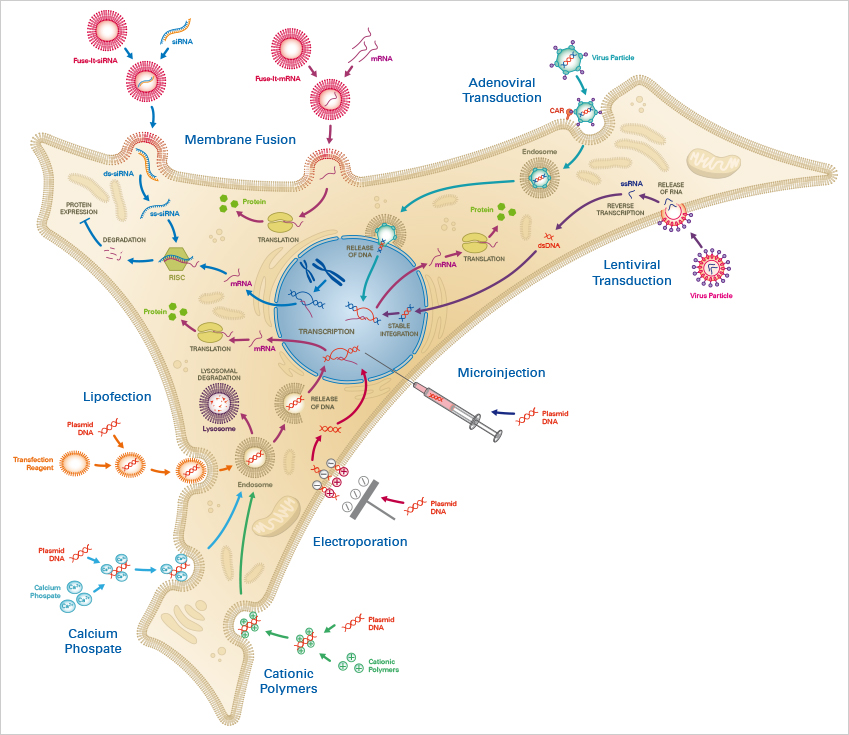Transfection Methods
Naturally, cells usually do not take up foreign nucleic acids without external stimulation. Thus, an efficient and biocompatible transfection method is needed, which has to be accurately adapted to the cell type and the material to be transferred. To date, many transfection methods have been developed, each of them with its own advantages and disadvantages for the respective application area of interest.
Transfection methods can be basically subdivided into three different groups: chemical transfection, physical transfection, and viral transduction. In this chapter, you can find a brief description of the most commonly applied methods, summarizing the characteristics, advantages, and pitfalls of each approach.

Chemical Transfection
Viral Transduction
Physical Transfection




